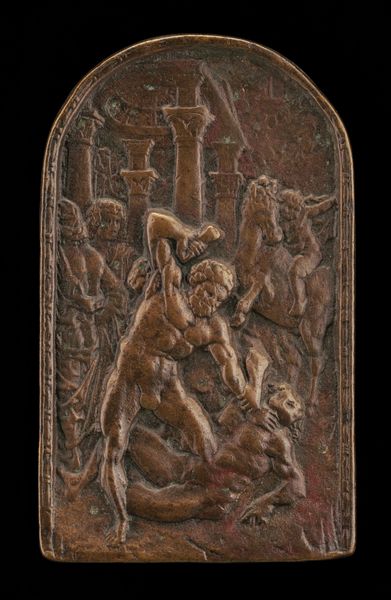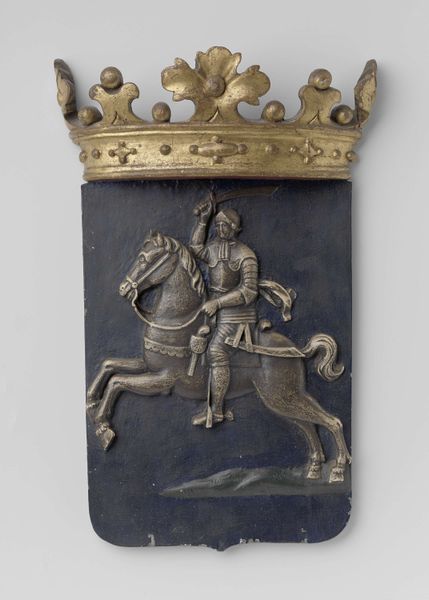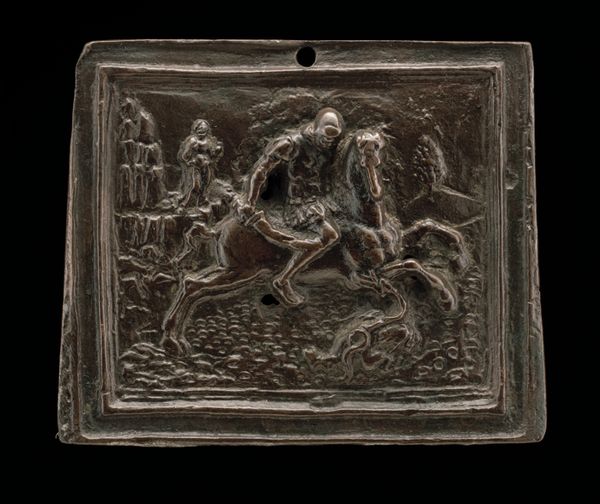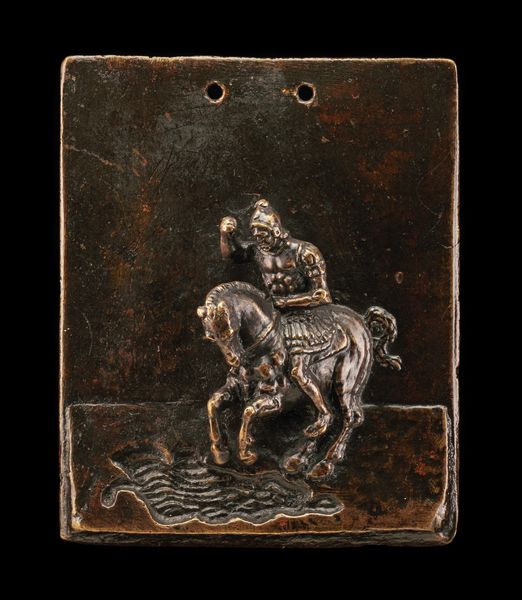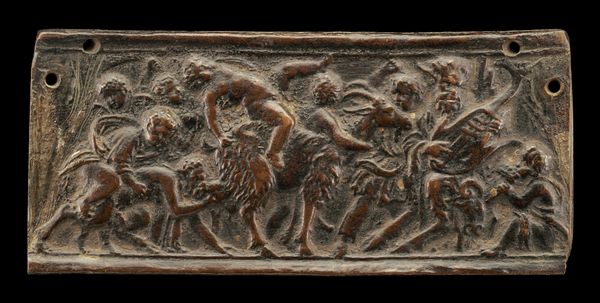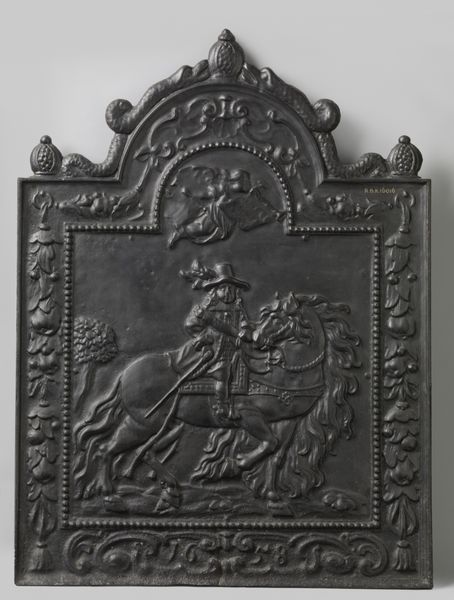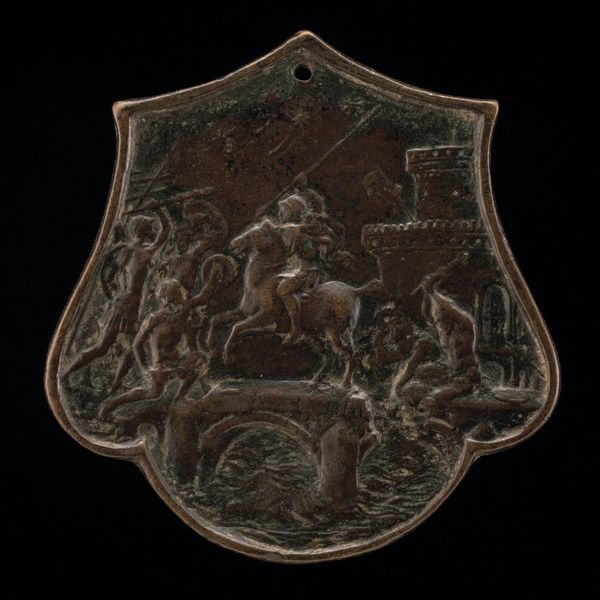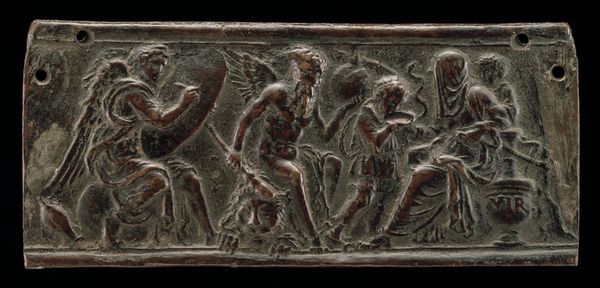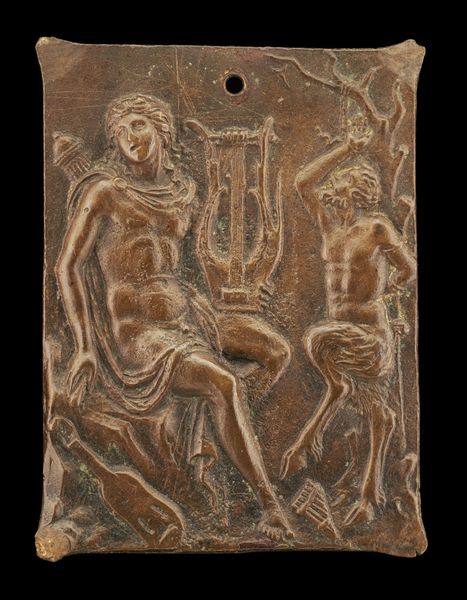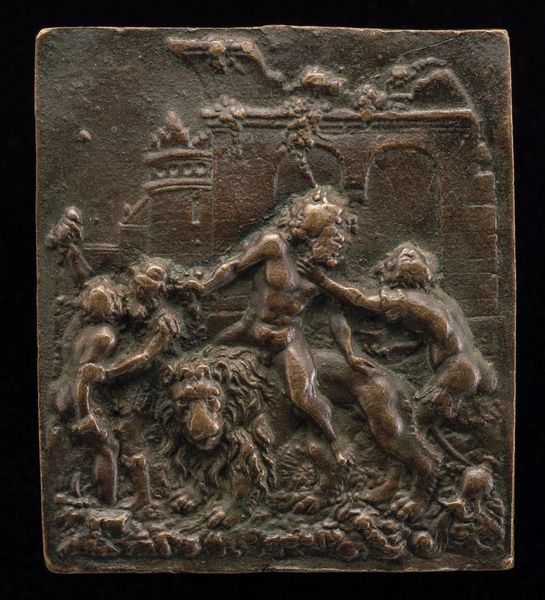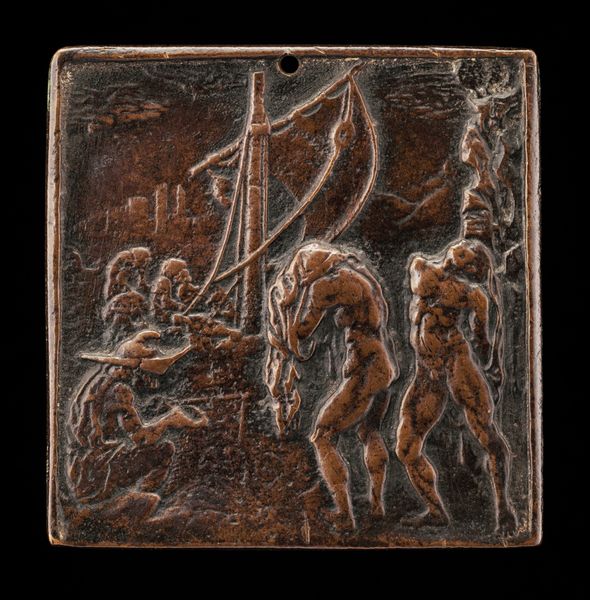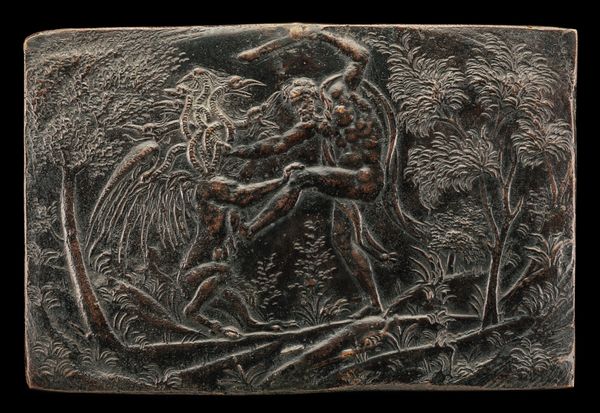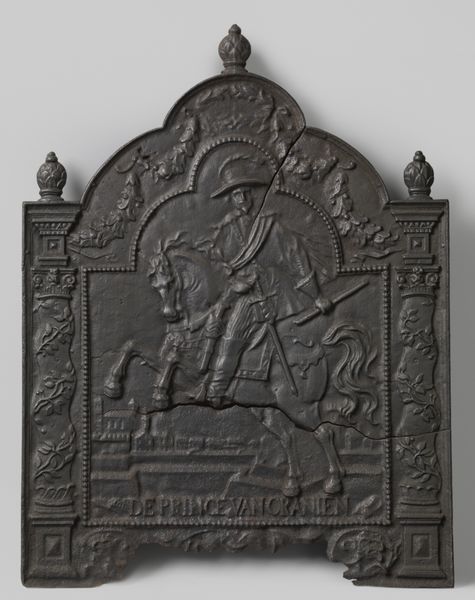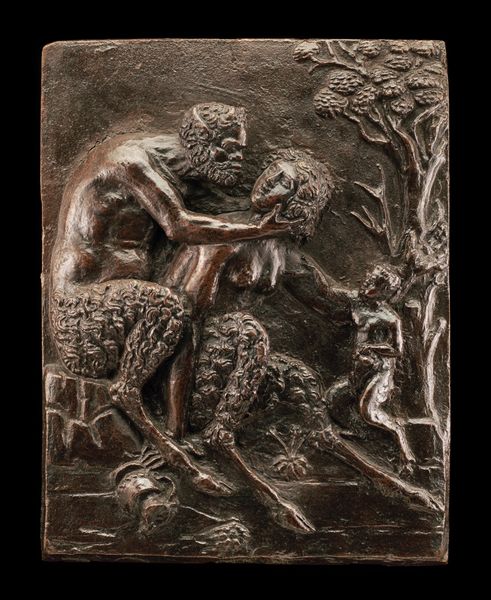
relief, bronze, sculpture
#
narrative-art
#
stone
#
sculpture
#
relief
#
bronze
#
figuration
#
ancient-mediterranean
#
sculpture
#
history-painting
Dimensions: overall: 8.2 x 6.5 cm (3 1/4 x 2 9/16 in.) gross weight: 110 gr
Copyright: National Gallery of Art: CC0 1.0
Andrea Briosco, called Riccio, created this bronze plaquette, Horseman and Foot-Soldier, in Padua during the early 16th century. The Italian Renaissance, with its revival of classical antiquity, deeply influenced Riccio, an artist celebrated for his small bronze sculptures. This piece depicts a triumphant, muscular horseman towering over a fallen soldier. The horseman, likely a general, is presented as the epitome of power, a common trope that served to enforce hierarchies of class and military might. The defeated figure at the bottom is a reminder of the ever-present human cost of these power structures. Although small in scale, the artwork is monumental in its implications, echoing a society steeped in the glorification of military prowess and conquest. The emotional tension is palpable, a clash between the glory of victory and the grim reality of war. This plaquette invites us to consider how art often reflects and perpetuates societal values, even as it hints at the underlying human experiences of suffering and defeat.
Comments
No comments
Be the first to comment and join the conversation on the ultimate creative platform.
